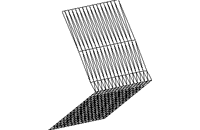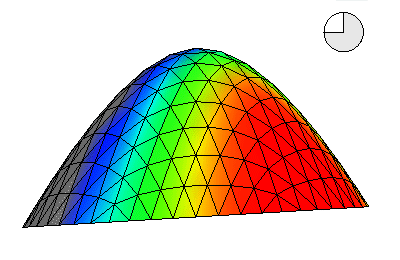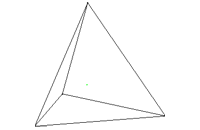| |
|
|
Formfinding |
|
|
| Formfinding is the process whereby a structure's shape is modified in an attempt to minimise a given variable (eg. surface area, weight, etc.). Traditional formfinding techniques can be applied to the base mesh prior to subdividing using any desired optimisation algorithm. |
| Since subdivision surfaces use a very coarse base mesh to define a very smooth surface they are particularly suited to applying formfinding techniques, whereby the positions of the base mesh vertices are moved to give a more optimal limit surface shape. This then allows a choice of which vertices are allowed to be moved and what quantity is being optimised. |
| |
|
|
Dynamic RelaxationDynamic Relaxation is often used in structural formfinding to find minimum surfaces for fabric structures of cable-nets. It works by applying a fictitious mass to each vertex and applies constant tensions to each edge or face. Each vertex is then iteratively moved in the direction of its resultant force and the equations of motion are solved on a time-stepping basis. By applying damping to the system, convergence can be achieved whereby the resulting geometry is in structural equilibrium. For example the pictures on the right show the application of dynamic relaxation on a boundary-constrained base mesh with two different values of viscous damping. |
 |
 |
Solar GainThe sun moves in a predictable way, so its position in the sky at any location in the world at any time of day on any day of the year can be calculated. The light comming from the sun can then be ray-traced to see how much any given building would receive on average over the course of a day/year. By allowing the surface to cast shadows on itself and by measuring the angle the rays make with the surface, glass absorbtion can be factored in to give an overall solar gain measure for any given geometry. The geometry can then be adjusted to maximise or minimise solar gain as required. |
 |
Acoustic PerformanceSound can be crudely approximated to behaving like particles which travel in straight lines and bounce off surfaces. Since subdivision limit surfaces can be directly evaluated in both position and surface-normal, they can also be used to mdoel a room for acoustic assessment. The acoustic performance of a space can be assessed and the bounding surface adjusted to reduce reverberation. |
 |
 |






